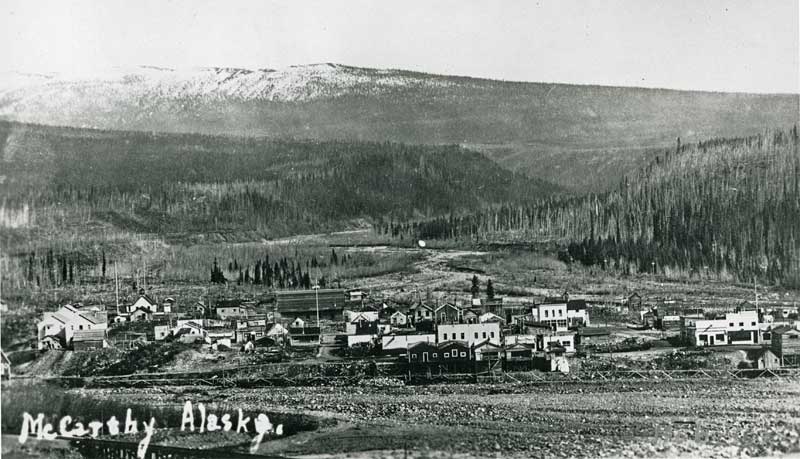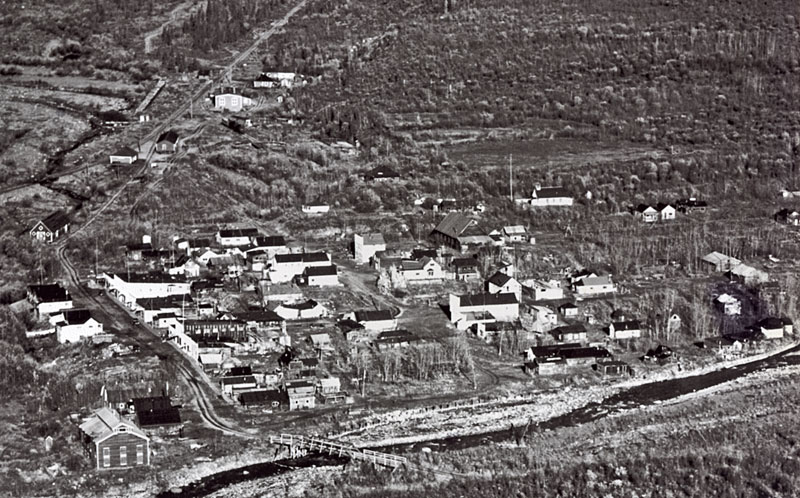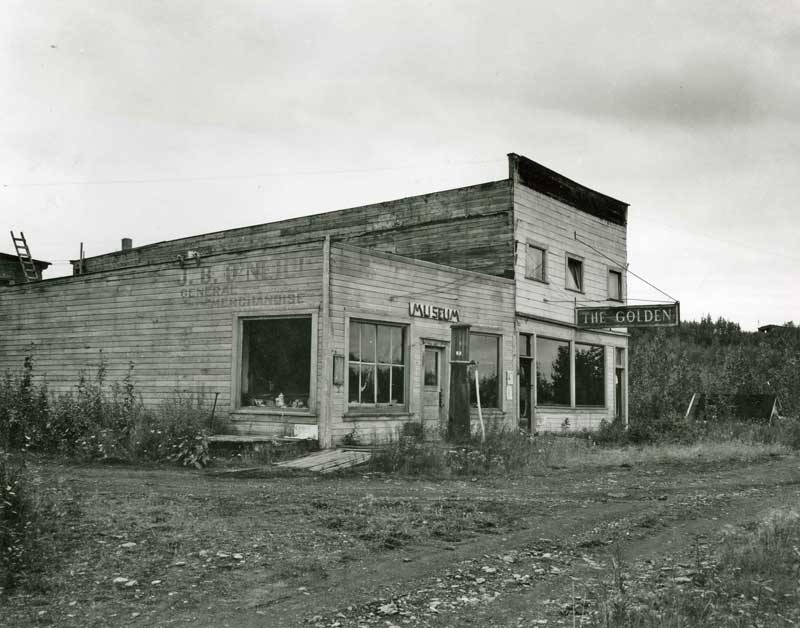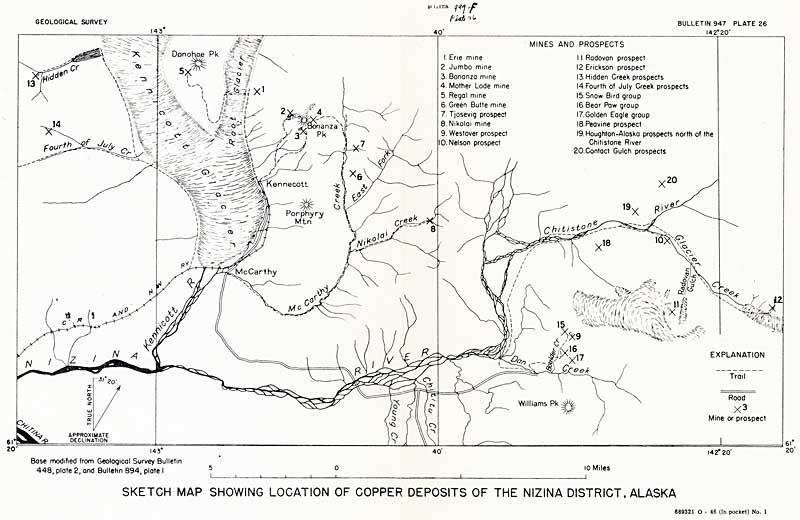
McCarthy, looking east
|
There was not much to downtown McCarthy. The main street was
Shushanna Avenue, on which there were two main business
blocks. The largest building was a deep flat-roofed
white-painted structure which housed what was once the infamous
Gustave Priesner’s drug store. After Gustave disappeared in
the midst of a double murder investigation, it became Ben
Jackson’s store. The large McCarthy Drugstore was the center of
town. Flanking the double-wide building was Laurie Brothers
Fine Men’s Clothing, Kate Kennedy’s Alaska Hotel and Archie
Poulin’s Alaska Billiards Hall to the north and Roy Snyder’s
Mecca Cafe and Pool Hall to the south.
The next block heading south toward McCarthy Creek
consisted of J.B. O’Niel’s General Store and Henry Olsen’s
Golden Hotel and Saloon. One block east of J.B. O’Niel’s sat
his competitor’s store--O.G. Watsjold’s Hardware and Grocery.
It shared Kennicott Avenue with Ma Johnson’s Hotel and Cap
Hubrick’s Photo Studio and Gift Shop.
The plain, large building behind Ma’s was the Arctic
Brotherhood building. It stood on one of the highest points in
town. Uphill from that was a white framed one-room school
house. Margaret Harrais arrived in town that year to take over
the job of school teacher. She became the town’s staunchest
prohibitionist, but in 1924 McCarthy was still very much a
wild-west community floating in liquor, gambling and
prostitution.

McCarthy,
showing Shushanna Avenue and Kennicott Avenue running
perpendicular to McCarthy Creek, 1939 --Bradford
Washburn Collection, UAF Archives
|

The Golden Bar in the ghost town of McCarthy, 1955 --UAF Archives
|
On the west side of Shushanna Avenue was the McCarthy
Sheet Metal Works and an assemblage of small cottages.
Anchoring the northern end of Shushanna Avenue was the railroad
yard, featuring a warehouse noted for its diamond-shaped windows
and fancy barn-like doors. The building sat elevated on posts
at the southern end of the rail siding. The McCarthy Creek end
of the avenue included the commissioner’s residence and a barn.
The roof of the residence mimicked that of the barn. The true
landmark, however, was the old Mother Lode power plant. It had
been sitting idle since 1918 and was used only for two seasons
before that.
In some ways this silent dinosaur was a perfect symbol
of McCarthy. It was built quickly but expertly and expensively,
then used only briefly before becoming obsolete. When Kennecott
absorbed the Mother Lode Copper Company, the power plant was
shut down, never to be used again. Its highly desirable
generators sat idle at the edge of a town which badly needed the
reliable power. Kennecott found a use for the generators in
1924, but the plant itself remained as an early indicator of
what was to become of Kennecott and McCarthy--the towns which
owed their existence and ultimate demise to the Copper River and
Northwestern Railway--and the copper itself.
Beyond the plant was the wooden bridge which crossed
the glacier-fed creek. The bridge marked the beginning of the
Nizina road which headed up the south bluff, meandering about
eight miles to the four-span bridge crossing with a trestle
approach on the south end. The road continued on to the Dan,
May, and Chititu Creek placer operations of the Nizina gold
district.

|
The Nizina
Mining District, showing location of Kennecott Mines,
Green Butte, Mother Lode & Nicolai Mines. --USGS
1941 |
Continue with
|
No comments:
Post a Comment